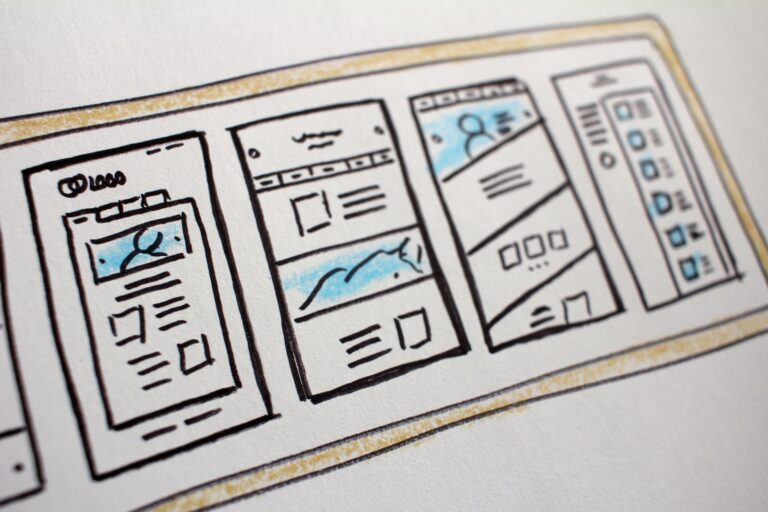
how much a website cost in India
The cost of building a website in India can vary depending on various factors, including the complexity of the website, its features and functionalities, the expertise and experience of the web development company or freelancer, and the region or city in India where the services are being provided.

Basic Informational Website
A basic informational website, with a few pages and basic features, can cost anywhere between ₹5,000 to ₹20,000 ($70 to $280) or more.
Reasons for the cost?
These are mostly static websites. The cost of a basic informational website depends on several factors. Firstly, the complexity of design and functionality plays a significant role. Customized designs, interactive elements, and responsive layouts require more time and expertise, thereby increasing the cost. Additionally, the number of pages and content to be created affects the overall price. Development and coding, including backend integration, database setup, and CMS implementation, contribute to the cost as well. Moreover, factors like the level of customization, inclusion of SEO optimization, and ongoing maintenance and support services can further impact the final price. Ultimately, the cost reflects the time, effort, and expertise involved in creating a functional and visually appealing website.
Small Business Website
A more feature-rich website for a small business, including additional pages, contact forms, image galleries, and some customization, can range from ₹20,000 to ₹50,000 ($280 to $700) or more.
Reasons for the cost
- Design Complexity: The complexity and uniqueness of the design can significantly impact the cost. Custom designs with intricate graphics, animations, and interactive elements require more time and expertise.
- Functionality: These are of type dynamic. The inclusion of advanced features like contact forms, image galleries, sliders, blogs, e-commerce integration, booking systems, or membership portals increases the complexity of development, leading to higher costs.
- Content and Pages: The number of pages and the amount of content to be created affects the cost. More pages and extensive content require additional time and effort for development and content creation.
- Customization: Tailoring the website to align with the business’s brand identity through custom branding, color schemes, fonts, and layouts often incurs additional costs.
- Admin Dashboard: login in to the admin section, website owner can update his/her website without much coding knowledge later on
- Third-Party Integration: Integrating external systems or APIs, such as payment gateways, social media platforms, CRM systems, or analytics tools, adds complexity and may require specialized expertise, impacting the overall cost.
- Responsive Design: Ensuring the website is optimized for different devices and screen sizes involves additional development and testing efforts, which can influence the cost.
- Ongoing Maintenance and Support: The inclusion of ongoing maintenance, updates, and support services after the website launch can affect the overall cost.
- Timelines: Urgent or accelerated project timelines might require additional resources, leading to increased costs.
It’s important to discuss these factors with web development professionals to get an accurate estimate for a vibrant and feature-rich website tailored to the specific needs of a small business.

ecommerce website cost in India
If you require an online store with features such as product listings, shopping cart, payment gateway integration, and inventory management, the cost can range from ₹50,000 to ₹1,50,000 ($700 to $2,100) or more, depending on the size and complexity of the e-commerce platform.
Reasons for the cost
- Functionality: E-commerce websites require robust functionality to support online transactions, inventory management, order processing, and payment gateways. Developing and integrating these features requires additional time and expertise, increasing the overall cost.
- Security: E-commerce websites handle sensitive customer information, including payment details. Implementing strong security measures to protect user data from potential breaches and ensuring compliance with industry standards adds to the cost.
- Design and User Experience: E-commerce websites need to be visually appealing, user-friendly, and optimized for conversions. Customizing the design and layout, creating intuitive navigation, and optimizing product display and search functionality contribute to higher costs.
- Product Catalog and Management: Setting up and managing an extensive product catalog, including adding product details, images, descriptions, and variants, requires additional effort and time. This complexity affects the overall cost of the website.
- Integration with Payment Gateways and Shipping Providers: E-commerce websites need seamless integration with payment gateways to process transactions and with shipping providers to calculate shipping costs and manage order fulfillment. Integrations with third-party services involve additional development and testing, impacting the cost.
- Scalability and Future Growth: E-commerce websites should be scalable to accommodate potential growth and increased traffic. Building a scalable infrastructure, implementing caching mechanisms, and ensuring the website can handle high volumes of traffic and transactions add to the cost.
- Ongoing Maintenance and Support: E-commerce websites require regular updates, security patches, and technical support to ensure smooth operation and address any issues. Ongoing maintenance and support services contribute to the overall cost.
Custom Web Applications
For complex web applications with custom functionalities, database integration, user management systems, and advanced features, the cost can vary significantly based on the requirements. It can range from ₹1,50,000 to ₹10,00,000 ($2,100 to $14,000) or more, depending on the scope and complexity.
Reasons for the cost
- Complexity: Custom web applications are often complex and tailored to specific business needs. They require extensive planning, analysis, and development to meet unique requirements. The complexity of features, functionalities, and integration with other systems significantly impacts the cost.
- Customization: Custom web applications are built from scratch, allowing for personalized branding, user experience, and functionality. The process involves creating a unique design, developing custom features, and implementing tailored workflows, all of which require additional time and expertise.
- Development Time: Developing custom web applications involves writing code from scratch, implementing intricate logic, and testing extensively to ensure functionality and usability. The longer development time required for customization contributes to higher costs.
- Integration with Third-Party Systems: Custom web applications often need to integrate with existing systems, APIs, databases, or other software. This integration requires additional development effort and expertise, adding to the overall cost.
- Scalability and Performance: Custom web applications need to be scalable to handle increasing user loads and data volumes. Building a scalable infrastructure, optimizing performance, and ensuring high availability involve additional costs.
- Security: Custom web applications typically handle sensitive data, such as user information or business data. Implementing robust security measures, such as encryption, authentication, and access control, requires specialized knowledge and adds to the cost.
- Testing and Quality Assurance: Custom web applications require thorough testing to ensure functionality, compatibility, and security. The cost of extensive testing, bug fixing, and quality assurance processes contributes to the overall expense.
- Ongoing Maintenance and Support: Custom web applications often require continuous updates, enhancements, and technical support. Ongoing maintenance and support services contribute to the long-term cost.
- Expertise and Skill Set: Developing custom web applications requires a high level of expertise and skill set, including proficiency in programming languages, frameworks, databases, and development methodologies. The specialized skills and experience of developers involved in custom web application development increase the cost.
Despite the higher cost, custom web applications offer businesses the advantage of tailored solutions that precisely meet their unique needs, streamline processes, and provide a competitive edge in their industry.
It’s important to note that these are just estimated ranges, and the actual cost can vary based on individual project requirements and negotiations with the web development service provider. It is advisable to consult with multiple web development companies or freelancers to get accurate quotes based on your specific needs.







